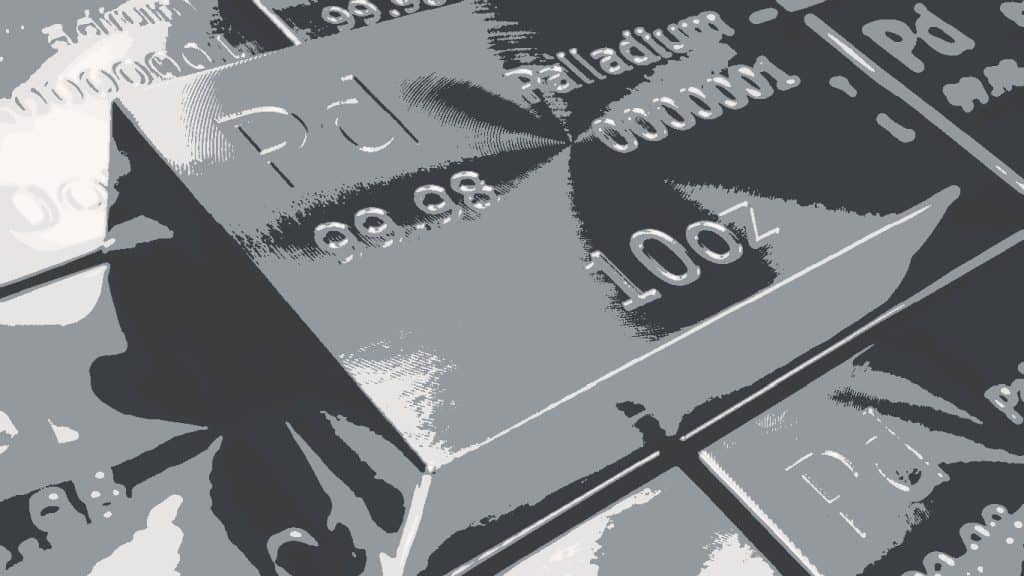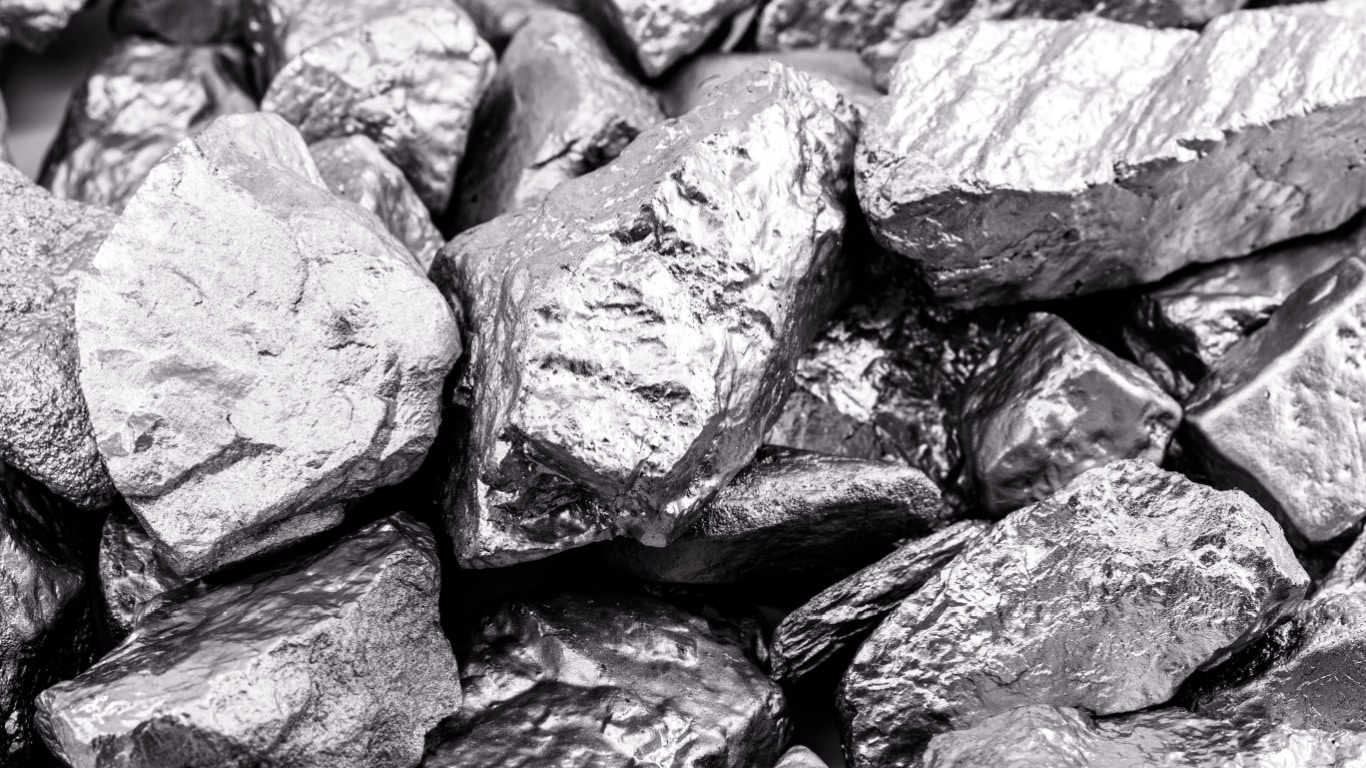The historical performance of palladium suggests that it can provide strong returns and potential diversification benefits for investors seeking exposure to alternative asset classes.

Palladium is a valuable metal used in many things, like jewelry, electronics, and car parts. Because of its unique properties, it’s considered a precious metal. It is often sought by investors to diversify their investment portfolios.
Palladium: An overview
Palladium is a valuable commodity used in many things, like jewelry, electronics, and car parts. Because of its unique properties, it’s considered a precious metal. Investors often seek it to diversify their investment portfolios because of its potential for long-term growth and price stability.
Over the past decade, palladium has outperformed most other precious metals and traditional investments, like stocks and bonds (insert citation about performance)
The price of palladium has risen significantly in recent years due to a combination of factors, including increased demand from the automotive industry for use in catalytic converters, limited supply, and investor interest in precious metals as a hedge against inflation and economic uncertainty.
Over the past 9 years, Palladium has returned approximately 209% vs. 98% for the SP500, highlighting its market potential.
Factors That Impact Palladium
Several factors affect the price of palladium, including economic conditions, geopolitical events, substitution risk, investment demand, and technological advancements.
Economic conditions
Global economic conditions, including the strength of the dollar, inflation rates, and interest rates, often influence palladium prices the economy is strong, and demand for palladium tends to increase, which can drive up prices. Conversely, when the economy weakens, demand for palladium may decrease, leading to lower prices.
Geopolitical events
Political instability or conflict in major palladium-producing countries can also affect prices. For example, sanctions on Russia, one of the largest producers of palladium, can limit supply and increase prices.
Substitution
Palladium is often used as a substitute for other metals, s such as platinum, which can also affect its price. If platinum prices riseicantly, buyers may switch to palladium, thus driving up demand and prices.
Investment demand
Palladium is traded as a commodity, and investment demand can influence prices. If investors perceive palladium to be a good hedge against inflation or economic uncertainty, they may be an increase in investor demand, which will also drive up prices.
Technological advancements
Changes in technology can also affect the price of palladium. For example, new methods for producing catalytic converters that use less palladium could reduce demand and lower prices. On the other hand, advancements in fuel cell technology could increase demand for palladium, driving up prices. (Add tangible example)
PROs of Palladium
There are several advantages of investing in palladium, including:
Diversification
Investing in palladium can help diversify your investment portfolio, as it is a separate asset class from traditional stocks and bonds.
Increasing demand
The demand for palladium has steadily increased due to its use in various industries, including automotive, electronics, and jewelry. This trend is likely to continue, making it a potentially lucrative investment.
Limited supply
Palladium is a rare metal, with most of the world’s supply coming from just a few countries. This limited supply can help support its value and increase its price over time.
Hedge against inflation
Like other precious metals, Palladium can act as a hedge against inflation. In times of economic uncertainty or rising inflation, the value of palladium may increase as investors seek safe-haven assets.
Potential for capital gains
Palladium prices have historically been volatile, which means there is potential for significant capital gains for investors who can buy low and sell high.
CONs of Palladium
While there are several advantages of investing in palladium, there are also some potential drawbacks or risks to consider:
Price volatility
The price of palladium can be very volatile and subject to rapid fluctuations due to market conditions, supply and demand, geopolitical events, and other factors. This volatility can make it difficult to predict and manage risk.
Limited liquidity
Palladium is a relatively illiquid asset compared to more mainstream commodities like oil and platinum. It may not be easy to buy or sell large quantities of palladium quickly, which could impact its value.
Concentrated supply
The majority of the world’s palladium supply comes from just a few countries, namely Russia and South Africa. This concentrated supply creates the potential for supply disruptions or geopolitical risks that could impact the price of palladium.
High barriers to entry
Investing in palladium can require significant upfront costs, such as buying physical palladium bars or coins or investing in a palladium ETF or fund. These high barriers to entry may make it difficult for some investors to access the palladium market.
Environmental concerns
Palladium mining and production can have negative environmental impacts, including water pollution and greenhouse gas emissions. This may make some investors hesitant to invest in palladium due to ethical or environmental concerns.
How to Invest in Palladium
There are several ways to invest in Palladium, including ETFs, stocks, futures, and even Palladium bullion.

Palladium ETFs
Investing in palladium ETFs is a way to gain exposure to the price movements of palladium without needing to purchase the physical metal itself.
Exchange-traded ETFs are investment funds traded on stock exchanges like stocks. Palladium ETFs own physical palladium and can also hold futures contracts or other financial instruments that track the price of palladium.
By investing in a palladium ETF, you essentially buy a share in the fund, representing a portion of the underlying assets. This allows you to benefit from the price movements of palladium without needing to own and store the metal physically.
Investing in palladium ETFs can be a convenient and cost-effective way to invest in palladium, as the ETF takes care of the storage and insurance costs. It also provides liquidity, as you can buy and sell shares of the ETF on the stock exchange at any time during trading hours.
Palladium ETFs:
- Aberdeen Standard Physical Palladium Shares ETF (PALL)
- Invesco DB Palladium Fund (PALL.P)
- ETFS Physical Palladium Shares ETF (PALL.A)
- iPath Series B Bloomberg Palladium Subindex Total Return ETN (PALL.L)
- GraniteShares Platinum Trust (PLTM)
Palladium Bullion
Investing in palladium bullion involves purchasing physical palladium through bars or coins.
Palladium bullion is made of at least 99.95% pure palladium and is traded in the same way as other precious metals like gold and silver.
Investors can buy palladium bullion from reputable dealers or brokers. Palladium bullion bars come in various sizes, typically 1 ounce to 10 ounces, while coins can be as small as 1/10 of an ounce.
When investing in palladium bullion, investors need to consider storage and insurance costs, as they will need to keep the physical palladium in a secure location. These costs can eat into potential profits, so investors should factor them into their investment decision.
Palladium bullion can be a good option for those who prefer to invest in physical assets and want to hold onto their investment for a long time. However, it may not be as liquid as other investment options and can be harder to sell quickly in times of market volatility.
Palladium Stocks
Investing in palladium stocks means buying shares of companies involved in palladium production, exploration, or development.
There are several types of companies in the palladium industry, such as mining, exploration, and refining companies. Investing in these companies can provide exposure to the price of palladium, as the cost of the metal influences their profits and stock prices.
When investing in palladium stocks, investors need to consider the financial health of the companies they are investing in, as well as their track record and future growth potential. Investors should also be aware of the potential risks associated with investing in individual stocks, such as company-specific risks and market volatility.
Palladium Stocks:
- Anglo American Platinum Ltd (OTC: AGPPF)
- Impala Platinum Holdings Ltd (OTC: IMPUY)
- Norilsk Nickel (OTC: NILSY)
- Sibanye Stillwater Ltd (NYSE: SBSW)
- North American Palladium Ltd (OTC: PALDF)
Palladium stocks can be a good option for investors who want exposure to the palladium industry but do not want to invest directly in the physical metal. However, a company that is involved in the production or mining of palladium may not in direct correlation with the commodity itself.
This could be due to the overall financial health of the company or the performance of unrelated lines of business.
Investing in individual stocks can be risky and require significant research and due diligence, so investors should be prepared to do their homework before making investment decisions. Alternatively, investing in a palladium ETF that tracks a basket of palladium stocks can provide greater diversification and lower risk than investing in individual stocks.
Palladium Futures
Investing in palladium futures involves making a financial bet on the future price of palladium. A futures contract is an agreement between a buyer and a seller to exchange a set amount of a commodity, in this case, palladium, at a predetermined price and date in the future.
Investors can buy or sell palladium futures contracts on a commodities exchange. When an investor buys a palladium futures contract, they are betting that the price of palladium will increase in the future. palladium’sum’s price increases, the investor can sell the contract for a profit. On the other hand, if the price of palladium decreases, the investor could potentially lose money.
Investing in palladium futures can be a high-risk, high-reward investment strategy. The futures market can be volatile and unpredictable, and investors need to understand the market well and the factors that influence the price of palladium. Futures contracts also require a margin deposit, which can be substantial, and there is the potential for significant losses if the price of palladium moves against the investor.
Palladium futures can be a good option for investors looking to take a short-term speculative position on the price of palladium. However, for most investors, other palladium investment options, such as palladium ETFs or physical bullion, may be better due to their lower risk and greater liquidity.
The Bottom Line
Investors often seek palladium to diversify their investment portfolios due to its potential for long-term growth and price stability. Palladium’s price has risen significantly in recent years, outpacing the returns of gold and silver, making it a potentially lucrative investment.
While there are several benefits of Palladium, such as increasing demand and providing a hedge against inflation, the price of palladium can be volatile and subject to rapid fluctuations due to market conditions, supply and demand, geopolitical events, and other factors.
Readers should research further and seek professional investment advice where possible.

